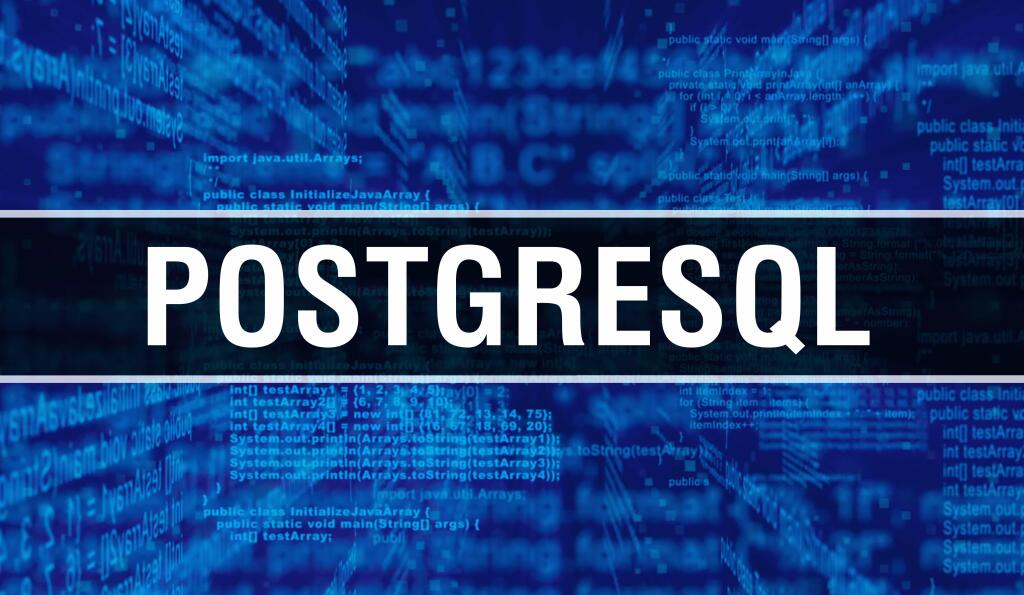Content
Advancements in technology have enabled the way we do business and allowed some to gain competitive advantage. At least that’s what we found when we surveyed 500 IT and Software professionals about their practices, tools, and challenges. 93% of these pros value customer satisfaction more than anything else, but 60% of them also say that satisfaction is near impossible to measure. Kevin Casey writes about technology and business for a variety of publications.
The event-driven model, in which functions are code units that execute in turns as a response to specified triggers, is now widely used to run code, manage containers, and handle other cloud computing tasks. Because companies don’t have to have a server infrastructure, they only pay for what they use. Cloud computing platforms usually charge for execution duration without taking the idle-time into account. It’s no secret that many enterprise applications use monolithic architecture. But as soon as the applications grow to a large-scale database and accumulate a lot of additional code, agility becomes a problem.
Steps in the software development lifecycle
Lean makes use of resources such as inventory management, Kanban boards, and value stream mapping exercises to help optimize the time spent on the development process. A microservices architecture, also simply known as “microservices”, is an approach to building an application as a series of independently deployable services that are decentralized and autonomously developed. These services are loosely coupled, independently deployable, and easily maintainable.

To be able to come to a good end-to-end process, it is key to have the right foundations. On the one hand, this will require a well governed and agreed upon process that allows room for continuous improvement and continuous learning. On the other hand, aspects like culture and attracting and developing the right talent are indispensable, a prerequisite for success. The objective of quality control is to improve the quality of our software. It involves Quality management plan, Quality metrics, Quality checklist, Quality baseline, and Quality Improvement measures.
Some organizations start with kanban because it’s relatively easy to explain and implement. Kanban works as a fan-in and fan-out process where the team pulls user stories from an intake board and funnels them through a workflow until they are marked done. Tech or team leads partner with the product owner on architecture, non-functional acceptance criteria, sequencing, dependencies, and other technology and security considerations.
The Nexus Between Cloud-Native Development and Business Modernization
From phones, TVs, cars, your doorbell, you name it, almost everything has a certain degree of software development involved with software-driven features. Taking an idea and developing a tangible product or service out of it is where software development comes in. Think of software development as the framework where a software project evolves from conception to deployment.
If the developer doesn’t know their tools and can’t use them well, chances are they’re not that great of a developer. The Open Source scene got a big boost as developers spread their self-developed libraries to the public via the Internet. For example, libraries for the browser range from gigantic frameworks like Angular down to smaller, specialised tools like moment.js or lodash. If you worked in a privileged environment that gave you Internet access, you could at least get help from newsgroups. Even then, you had to implement lots of features on your own that libraries provide today. The business world is under increasing demands for agility and speed.
- This first wave of agile software development practices was mainly focused on the internal alignment between business team members and IT functions.
- Adopting cloud-native processes is no longer an optional step—it’s become necessary for businesses that want to thrive in the digital marketplace.
- They measure progress against clear performance indicators, and communicate with stakeholders and the cross-functional team that is building the product.
- The process of understanding the functionality of the code you write , and how it connects to existing code is a big part of a software development job.
- They are empowered by their agency to represent stakeholders in making rapid product decisions without the need for many layers of approval.
- As an open source platform, node.js has one of the largest open source code libraries available.
It would be perfect if a single database could fit the needs of multiple use cases. Traditional one-size-fits-all database systems can no longer handle the scalability, performance, and availability requirements modern application development brings today. They are no longer an option, especially for microservice-based environments, or container-native environments. Serverless functions, in turn, help accelerate development https://globalcloudteam.com/ by using an event-driven model. When code is automatically executed in response to events, the development teams can finally invest less time and resources in infrastructure management and concentrate on business logic. Domain Driven Design is a modular framework that helps teams implement lean software development principles by creating a common model to talk about requirements, data entities, and process models.
Software Development Process Models
This aspect is sometimes referred to as a ‘shift to the left’ approach. The ‘shifting to the left’ metaphor dates to the 1990s, as software development organizations realized that the traditional/waterfall approach to software development often led to poor quality software and expensive fixes. An important root cause of these issues was that the actual testing was done far ‘to the right’, so modern software development very late in the life cycle. Especially for testing integration elements as soon as possible this mindset provided value. By moving things to the left, meaning to start testing as early as practical, software quality has many times improved significantly. While many frameworks for agile software development exist, these frameworks do not cover the full extent of agile and DevOps combined.

The Rapid Application Development methodology is also a stark contrast from the Waterfall methodology for software development where change is difficult to embrace and apply after software has been tested. This change has created a profound shift in how software is developed and released. Driven by the extremely high costs to repair a defect, long QA cycles were commonplace in early software development processes.
As a team grows, they’re forced to spend increasing amounts of time managing the project, and decreasing amounts of time actually doing the work. It’s possible for a first-time product owner to learn as they go, but it’s better to be trained in advance. There are many sources of agile and scrum training, some specifically for product owners. These range from YouTube video series to in-person, multi-day classes to become a “Certified Scrum Product Owner.” The more important the project, the more formal and rigorous that the product owner’s training should be. Moreover, security must be integrated into every stage of the development lifecycle, where each team, including operations, engineering, and QA, should have a specific role.
Open source plug-ins, Chinese and English bilingual, environment switching, global variables, cloud backup. One-stop management of interfaces, documents, error codes, and defects. But many organizations implement scrum, which organizes the work in cadences called sprints, usually lasting one or two weeks. The product owner writes the requirements as user stories, then prioritizes them in a backlog based on their business value. The team reviews the backlog and commits to the top user stories they can complete during the sprint.
How to get into modern software development as an SMB – Part 2 – The Cloud
For a long time, those servers were physical machines that either sat in the corporate office or datacenter, or perhaps in a colocation or hosting facility somewhere else. Chipmunk Code is a simple and extendable project manager designed for the Chipnix Linux Distribution project. Qpt understands Qt C++ projects (.pro) and allows to pass this information to command line tools as “Code Counters” and “Static Analysis tools”. It also can used inside QtCreator to act as a plugin for “Static Analysis tools” putting reported issues into QtCreator issues pane. Empower your remote team to plan projects, coordinate work remotely, and hit their goals with Asana.

Bitbucket gives teams one place to plan projects, collaborate on code, test, and deploy. If you want a graphical client for your version-control system, get only one. Don’t get multiple software products, since you won’t learn any of them properly. So far, we have discussed the top problems that modern developers face, and some of their solutions. Don’t jeopardize your work as a professional due to pressure—your responsibility as a developer is to produce high-quality, maintainable code.
By team size
Regardless of which framework or method is being followed, product development – in the end – is about creating value for the end customer. Empathizing with the end user and creating a deeper understanding of the end user is not always the number one priority however when it comes to developing new software products. Model-based evolution is an important principle of software development. A model-based approach supports the evolution of graphics and textual notions. In order to tackle these modern goals, we found that software teams are making use of 4 main software development practices, and will continue to do so in 2019. That means the same containerized application should run the same on the developer’s laptop as it will on a physical server in a datacenter as it will on a virtual machine in a managed cloud environment.
Forward looking organizations understand that Agile & DevOps are about shifting the value stream closer to the business. As discussed in this article, the value delivery stream needs to be considered as a whole to be able to fulfill the promise of delivering good quality software products at a constant high pace. When multiple teams needed to be involved for creating a releasable end product, the Agile scaling frameworks gained popularity, also focusing more on the so-called Lean-Agile mindset.
On Modern Software Development
More than 40 fields are part of ready-to-use templates that allow well-designed software to go live. Security features like custom password policies and multi-factor authentication can also be integrated. If you’re thinking about becoming a software or web developer, something important to understand is, you will rarely work alone.
With the right mindset, tools, and strategy, the only thing left is to trust the process. My best suggestion here is to only attend meetings where you can actively add value. A lot of the meetings are between two or three people who each drag a few people with them for support more than anything else.
Iterative life cycle process is important to alleviate risk at an early stage by repeating the above-mentioned steps again and again. Feature flagging allows teams to roll out a new feature to sub-set of customers (say 25%) to diffuse risk with problems and bugs, and to gauge customer feedback before rolling it out to the entire customer base. However tempting it may be to turn on a feature to customers all at once, the adoption of feature flags reinforces the importance of customer satisfaction. Tools that provide real-time information on deployments and release status in real time are allowing teams to ship customer-pleasing features regularly. The first two tectonic shifts in software development necessitated new ways for teams to work together. “Where it could take months to build out a data center 20 years ago, today a large solution can be deployed with a few clicks, leading to great increases in productivity.”
TECHNICAL SUPPORT SERVICES
Continuous delivery addresses post-release application software updates. Instead of occasionally pushing out massive updates, CD involves delivering smaller updates more frequently. This short-cycle approach improves software delivery and performance while yielding a super UX. By leveraging cloud-computing resources, businesses can gain access to scalable assets, increase organizational performance, and optimize digital agility. With a microservices architecture, developers can organize in smaller teams specializing in different services, with different stacks and decoupled deployments.
The idea is that you break up your task into small, manageable chunks and see progress quickly. If you go in the wrong direction, you won’t waste more than 30 minutes. It has been proven to work, and many people praise it as a productivity saver. The important part we’ll now address is the strategies and tools a modern developer needs.
